In 1925, Chanel introduced the original idea for the suit at a small show in her salon on Rue de Cambon in Paris. Known for mixing traditional ideas of masculinity and femininity, Chanel took inspiration from the sportswear and menswear that her then-boyfriend, the Duke of Westminster, would wear. Chanel herself would even reportedly wear her lovers' clothes, because she believed menswear to be more comfortable than pre-war women’s fashion of the time.

Chanel wished to find a way to free women from the restrictive corsets and long skirts popular during the Belle Époch (defined as the period from 1871 up until the First World War in 1914.) Chanel wanted women to exude elegance while allowing them to move freely. In 1947, newcomer Christian Dior introduced the famed "New Look" to the fashion world with cinched waists and full-skirts that celebrated ultra-femininity and rivaled Chanel's message to women. In response, Chanel was quoted saying, "Dior doesn't dress women, he upholsters them."
Inspired by sportswear, the iconic course tweed fabric used in the detailed crafting of Chanel suits was initially not considered a glamorous textile. Tweed was primarily manufactured in Scottish twill mills, where Chanel discovered the true diversity of the fabric. Chanel’s passion for feminizing tweed by implementing new colors, materials, and textures to the then-underutilized fabric took the fashion world by storm, inspiring other French couturiers to employ her methods. The slim skirt and collarless jacket dubbed “Chanel’s uniform” became widely known with the help of press coverage, specifically a magazine image of actress Ina Claire dressed in a Chanel suit printed in 1924.
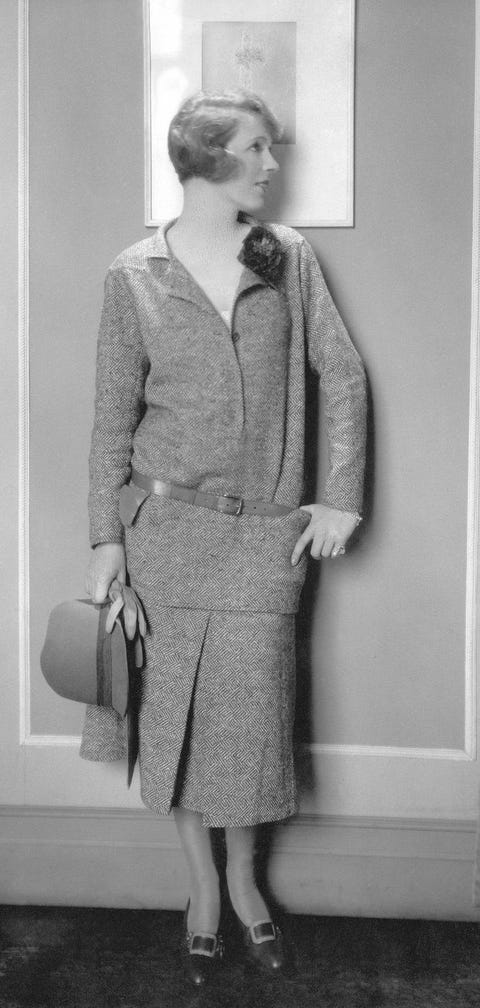
While Chanel's classic suit catered to the principles of First Wave Feminists during the early 20th century, Algerian-born Yves Saint Laurent stepped onto the fashion scene in 1966 with the creation of the "Le Smoking" tuxedo, a style inherent to the brand's aesthetic to today. The jacket aligned itself with the ideas of sexual liberation for the Second Wave Feminism movement, which arose during the '60´s. Few public establishments even allowed women to wear trousers inside, seeing it about as acceptable as wearing a bathing suit to dinner. Saint Laurent embraced the idea of female androgyny, which Chanel initially introduced into her works, but combined it with a cutting-edge sense of provocative sexuality for women that was absent from Chanel's vision.
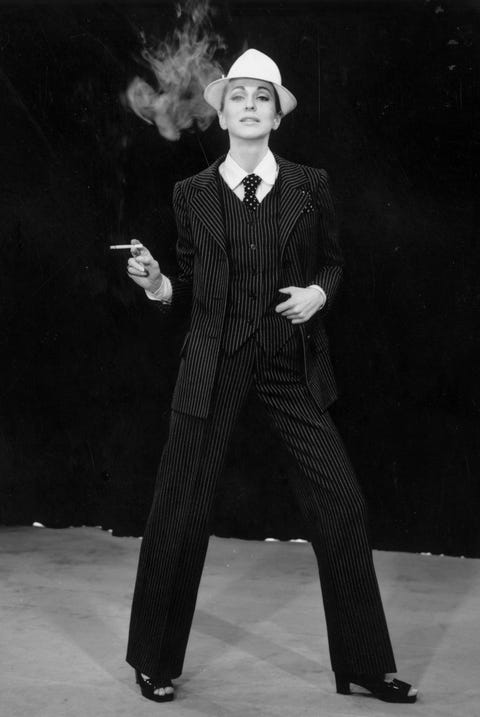
The Chanel suit soon after caught the attention of some of the most influential women of all time. One of the most notable admirers of the suit, First Lady Jackie Kennedy, historically wore a pink Chanel suit on the day her husband United States President John F. Kennedy was assassinated in Texas in 1963. The strawberry pink double-breasted suit was from the Chanel Haute Couture Fall/Winter 1961 collection and was completed with a pillbox hat in typical Jackie O fashion. An oft-debated topic was the authenticity of the set, as many argued the suit was originally produced by Chez Ninon in 1961. It was later revealed that the suit was part of Chanel’s “line-for-line” system, with Chanel providing the supplies for Ninon. This method was for the purpose of appearing more patriotic by having the garment made on American soil rather than in France. This particular suit worn by the former first lady quickly became ingrained in U.S. history, as highly televised event of President Kennedy’s death led to nationwide recognition of the suit. In 2003, nine years after her mother’s death, Caroline Kennedy gifted the suit to the U.S., where it currently resides in the National Archives. It won’t be put on display until 2103 in order to avoid sensationalizing the horrific act.
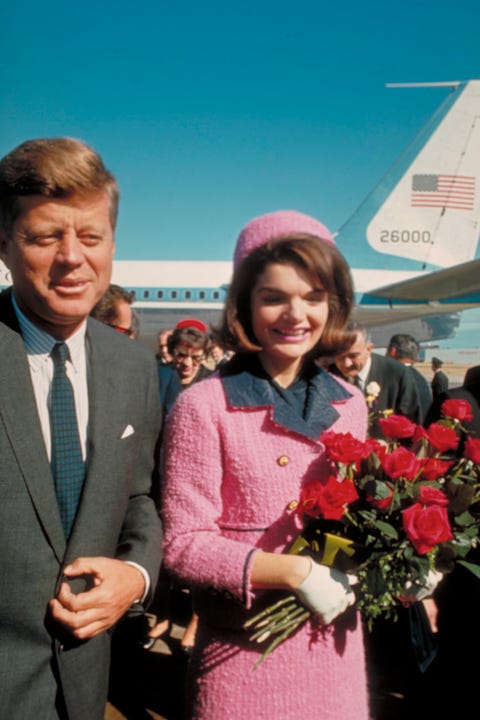
A formal reproduction for the suit was later created in 2016 for Natalie Portman’s portrayal of Kennedy in the film Jackie. Reproduced by costume designer Madeline Fontaine, the Chanel team aided in the reproduction of the suit by providing some of the materials, including buttons and chains, and allowing the film to credit the label.
Following Gabrielle Chanel’s death in 1971, several assistants directed the designer’s couture and ready-to-wear lines until German-born Lagerfeld was appointed creative director in 1983, while sustaining his prior job at Fendi. Lagerfeld assumed the role with respect for the traditions of the house, retaining several items and methods intrinsic to the brand’s identity. His vision aligned with Chanel’s original wishes to propel the brand towards avant-garde fashion. Lagerfeld wished to move Chanel away from the pastel-colored boxy suits of the ‘50´s and drive Chanel into the ‘80´s.

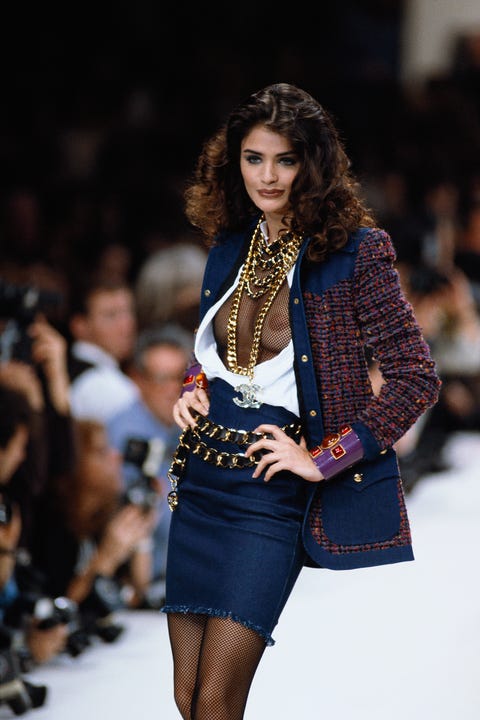
In more recent years, the Chanel suit still inspires modern-era fashion designers. Notorious for his kitschy-chic designs, Jeremy Scott exhibited his debut show as creative director for Moschino for Fall/Winter 2014, which drew more than a few sartorial inspirations from the iconic French house.
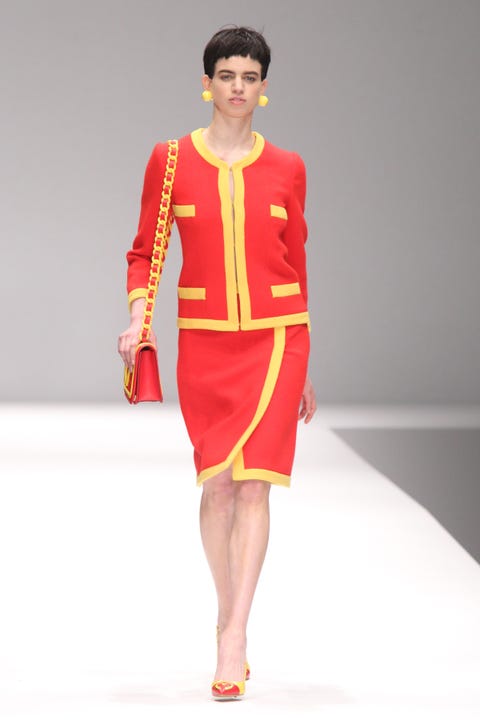
The Lagerfeld-era of Chanel advertisements and campaigns, many of which Lagerfeld himself photographed, preserved the brand’s identity of the opulent, empowered woman while introducing a younger, sexier side to the French brand. Lagerfeld is credited with promoting the logo branding of Chanel that has recently regained popularity. His use of the the iconic interlocking “CC” monograph on items from handbag locks to garments led to worldwide recognition of the insignia. Soon after, Chanel became an it-brand by maintaining their mature clientele, as well as ingratiating itself to new generations of young women.
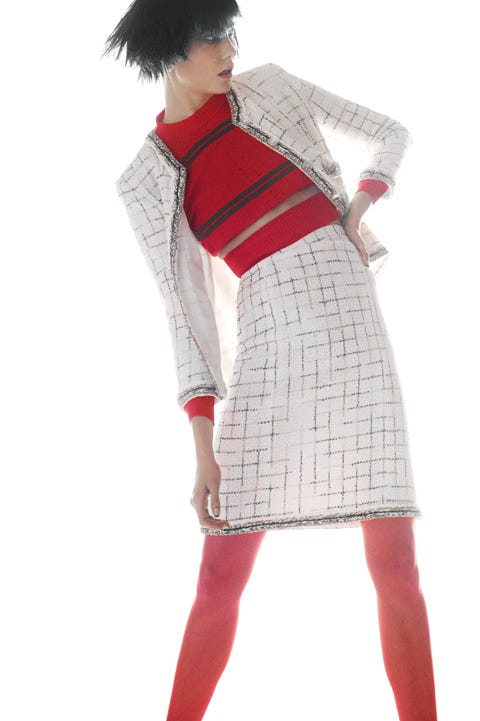
Today, the Chanel suit remains a symbol of the historical fashion house and is repurposed in new ways every season. The cult classic is remembered as a fusion of comfort, luxury, and elegance, maintaining the same design ethos introduced by Coco over 90 years ago. With Lagerfeld altering the style and audience of the iconic piece, the suit has preserved its role as a true emblem in fashion history.






































